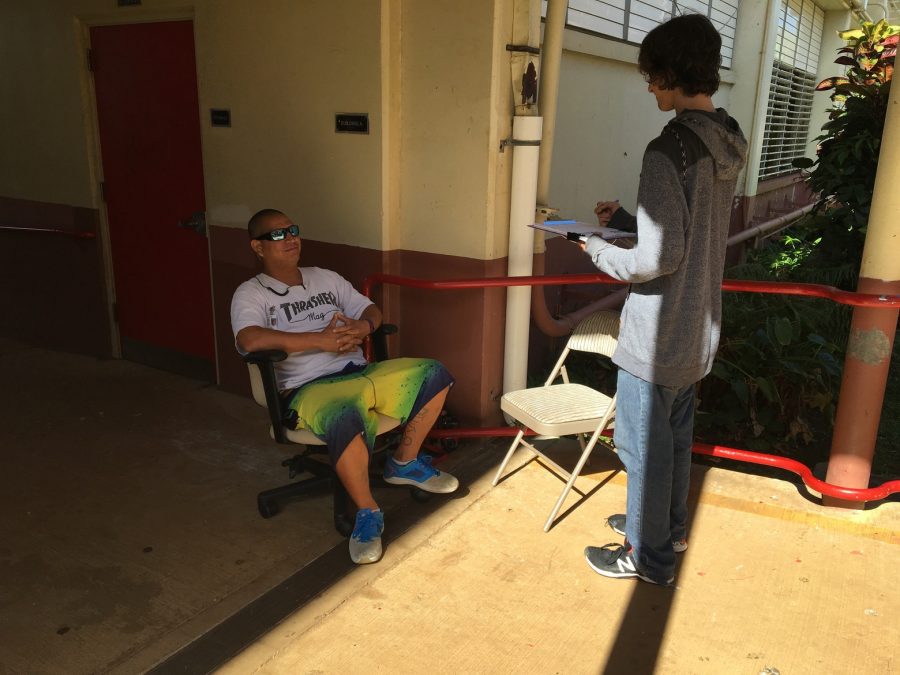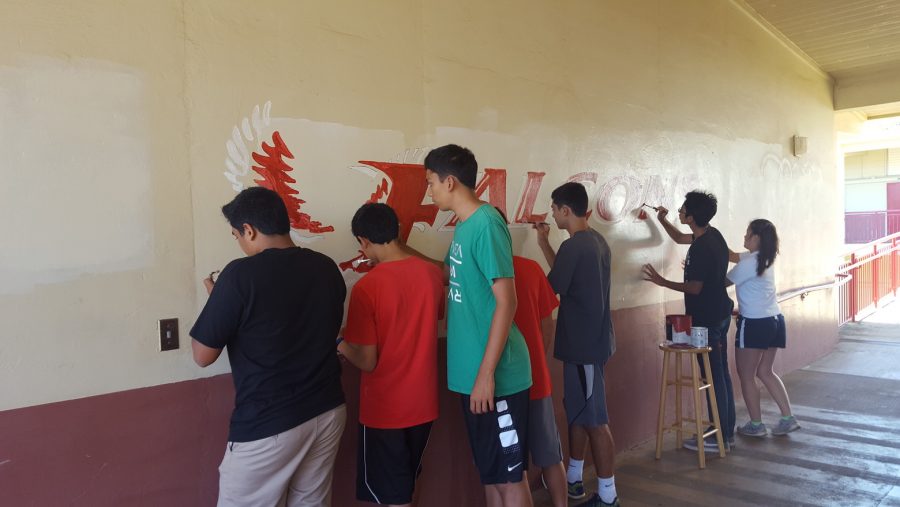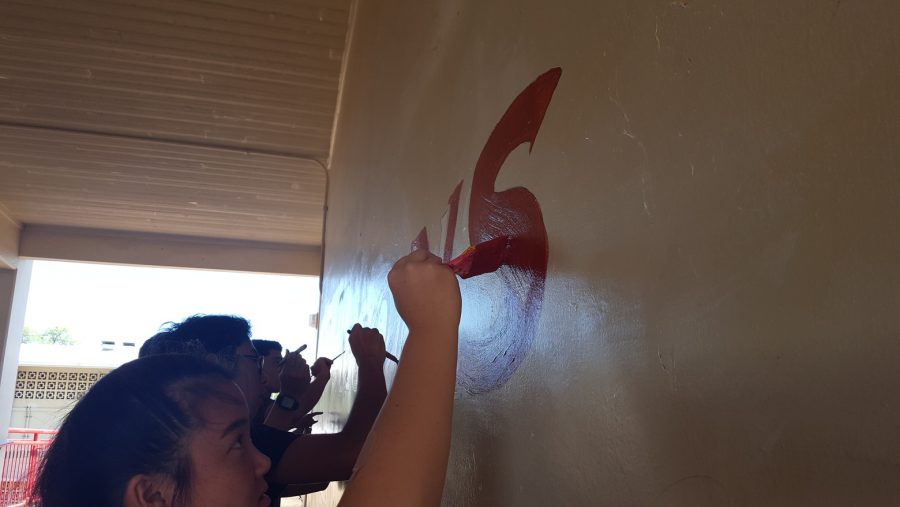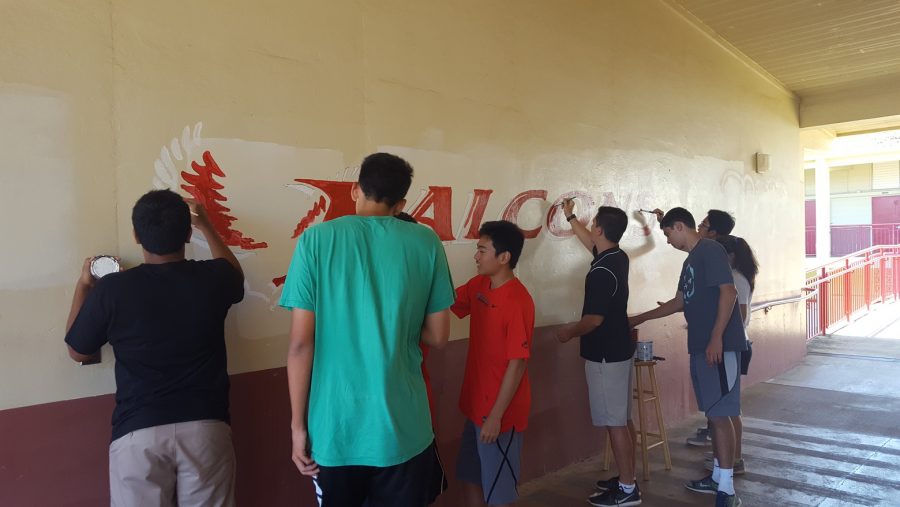Graffiti
May 25, 2016



 Vandalism has been a recurring issue in the bathrooms and hallways of Kalani. Often connected with the lack of school spirit and respect for school property; is vandalism really a problem that can’t be resolved?
Vandalism has been a recurring issue in the bathrooms and hallways of Kalani. Often connected with the lack of school spirit and respect for school property; is vandalism really a problem that can’t be resolved?
When it comes to vandalism, a sense of rebellion is primarily the reason why they occur in high schools. However, because of the frequency of vandalism in Kalani bathrooms, many teachers have labeled it as, “a problem that can’t be resolved.” When asked about the situation, Mrs. Ohta spoke, “It’s not fair to those who didn’t do it, but it can’t be helped,” which raises the question of the students who didn’t cause the issue, yet have to serve the same consequences. Many teachers are now becoming wretched in the current problem, as one teacher said, “I don’t think there is a way to completely prevent it, you just have to deal with it when it happens. As a way to prevent it, I don’t think there is a way.” What happened to the school pride we once had?
Students are creating ways in which they can better resolve the lack of school pride. It’s one thing to suggest solutions, it’s another to act upon it and change this problem. Now it’s up to each and every student to take initiative in promoting pride on campus.
The issue of vandalism affects everyone on campus, but especially the students. For male students who have to sign into the bathroom, vandalism has proven to be a hassle. “Signing in is not necessary because sometimes I have to pee really badly and don’t have time to sign in,” stated one sophomore. However, when asked if signing into the bathroom was the right choice, he said, “It is a good thing, it prevents the spread of graffiti.” Female students are not required by the school to sign in to use the bathrooms, which to some male students seems unfair.
However, when asking the same question to a female student, the answer didn’t change . “If girls had to sign into the bathrooms too, I would feel uncomfortable because for one, I would have to use the bathroom badly, so I wouldn’t want to sign in before I pee my pants. It also makes it seem like we have no privacy or trust if we have to sign in just to use the bathroom,” says one female student, grade 10. Students have formulated their own thoughts and ideas about this problem in addition to ways of solving it. An anonymous sophomore male student says, “I think that we need to step up security and possibly call in the cops to investigate.”
Vandalism is a problem that was created by students, and now needs to be fixed by the students. After all, the consequences directly hurt the students the most- why wouldn’t students want to make a change?
Students have attempted to make this change in little as well as big ways. For instance, members of the Kalani basketball teams are painting a mural in B building. “[Painting] makes me happy because I can participate positively in school,” says Christian Sales, one of the painters of the mural. However, he also expressed other concerns. “I think it encourages graffiti because people want to ruin nice things.” While this is a concern for many, Kalani has many artistic murals that haven’t been defaced. Additionally, painting a mural can encourage more students to participate and bring more art to the Kalani campus.
Some of Kalani’s counselor’s agree with the idea that vandalising comes from a lack of school spirit. “The fact that people keep vandalising the school shows that there is a lack of respect for school property,” says Mrs. Sandra Yoshida, the grade 10 counselor. Mrs. Yoshida calls the graffiti “highly severe” and “a hassle for everyone involved.” As for Mr. Trevor Teraoka, also a grade 10 counselor, he feels “deeply concerned” about the graffiti issue. When asked why he thinks students vandalise, he said, “People don’t have a lot of school pride.”
It seems that the general consensus from those on campus is that vandalisation comes from a lack of spirit. This proves to be a precarious situation for those who have to take care of its consequences- janitors and school security have to deal with this situation on a daily basis.
Mr. Jon and Mr. Kaimi, the security who are in charge of making the boys sign in to use the bathroom, feel this situation is a “nonstop pain in the butt” for everyone, including custodians, innocent students and parents. “The best thing to fix this problem is maybe more cameras at school,” they said.
What about custodians, who have to deal with cleaning up of troublesome students?
Mr. Bernard has been a custodian at Kalani for 13 years. Every year, he says there are groups of students who like to “bully and cause trouble.” For Mr. Bernard, the issue has less to do with school pride and more to do with immaturity. “Every year, there are different names they gotta take off the wall. Some years it’s guys and some years it’s girls. They gotta prove themselves- it’s their right of passage and they’re going through a stage.”
So when will graffiti end? “As the soon the kids start thinking right. It’s gonna take longer if they vandalize again; kids gotta learn through their mistakes right now, they’re going through a phase. It’s good to intervene now to help them,” says Mr. Bernard.
Some students have tried to defend graffiti in different ways. For some, graffiti is a sense of self expression as well as an art. Graffiti has been an outlet for students to express their concern and frustration towards the school, and they feel that getting rid of graffiti is silencing their voices.
But Mr. Matt Wong, the Vice Principal of Kalani, takes a different approach to this. When asked what students should do if they share this viewpoint, he said, “Talk to someone. It’s okay to have negative feelings but when you act on them, there can be serious consequences. Students can talk to me, their parents, or their counselors if they’re angry. I think students are frustrated and angry, and they haven’t found something to express themselves. They should try to channel these feeling into something more positive.”
When students choose to talk with adults about their challenges, it can relieve frustrations that could result in consequences. The solution lies within the students. Students are painting over graffiti, painting murals, and trying to spread positivity. Students may wonder what else they could do to help prevent graffiti in the future. In reality, the little things are what matters the most. Taking the lead on this problem is Kalani’s leadership to which are creating ways to resolve this. As said by Mr. Wong, “The students have already started to take the situation into their own hands. It went to the leadership class and they’ve discussed painting over graffiti. The school is for the students, and the students make a difference. Every student has a voice.”
Throwing away trash appropriately, keeping the bathrooms neat, and even just cooperating with security guards when signing into the bathroom shows respect for the campus.
Students are responsible for school pride. They’re held accountable for their own opportunities as well as their own consequences. Whatever they decide upon, their product is very much dependent on the decisions they choose to make.
Perhaps the sign ins are reducing vandalism, or perhaps they’re just wasting the time of busy students. Nevertheless, unless vandalism comes to an end, the outcome is never going to change.
Matt Wong • May 25, 2016 at 10:52 am
Rianne and Peter, thank you for covering this very relevant story at Kalani High School. You’ve told the story of a real world problem happening on our campus, and investigated the real world solutions that the school’s stakeholders are working toward. True journalists tell an unbiased story to the public by capturing the perspectives from a variety of reliable sources. You’ve done a great job of this by talking to students, security, teachers, and administrators. While I agree that problems like this may never be completely gone from any high school, I do see it as a learning opportunity that you and others have taken advantage of, and the adults at Kalani applaud you all.
Mr. Higa • May 25, 2016 at 10:00 am
Hopefully if students are conscious of their ability to have a positive on the school, they will take more pride in everything they do at Kalani.